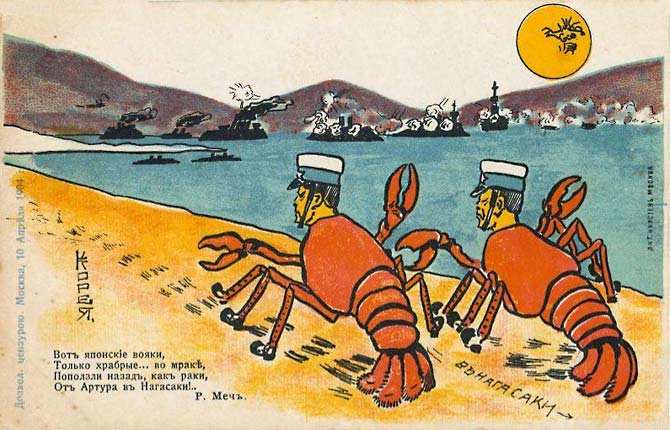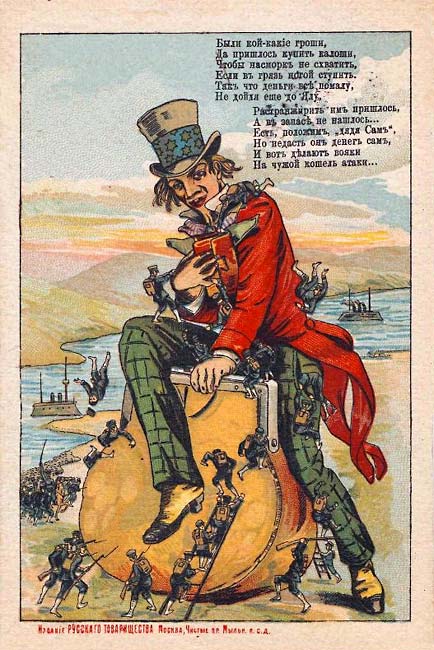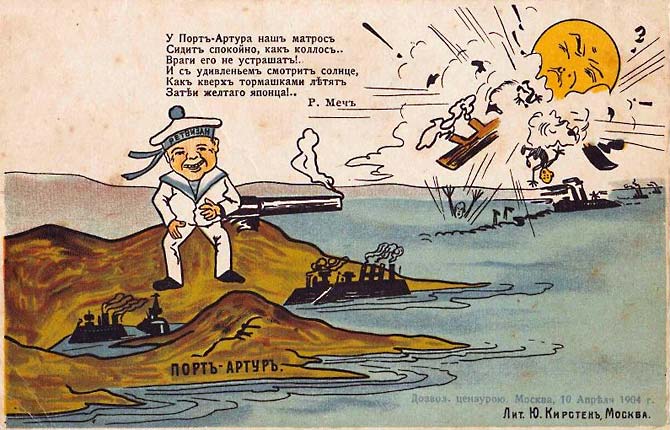Russia Lampooning the Japanese Foe
Russian propaganda postcards often combined
elaborate cartooning with long captions, as seen
in the samples that follow with full translation
of the Russian texts.
The first three graphics were issued as a series
with the recurring image of an animated Japanese
sun observing the scene and text attributed to R.
Mech. All three of these postcards contain the
notation that they had passed censorship in
Moscow on April 10, 1904.
These and most of the other Russian postcards reproduced here were clearly issued at the very beginning of the war, before the Russian army and navy began suffering severe defeats.
The following two detailed cartoons involving "Uncle Sam"
play on the fact that the Japanese had financed
their war in considerable part with loans raised
in New York (as well as in London). Both reflect
early optimism that the Japanese would cower
before Russia’s might and quickly become
desperate for more financial support.
The following black-and-white juxtaposition of a confident
and disgruntled Japanese "before and after"
bombarding Port Arthur, also issued early in the
war, similarly reflects gross overconfidence, for
after blockading the Russian fleet in Port Arthur
after their surprise attack in February 1904, the
Japanese subsequently destroyed not only that Far
Eastern fleet but also a huge Russian armada sent
from the Baltic Sea all around the world to
rescue it.
The final postcard in this series was drawn by
the well-known French artist Georges Bigot and
issued in Europe with no extended caption. It
makes the "Yellow Peril" animus present in other
Russian graphics seen here—the yellow dog, the
"macaque" or monkey—absolutely central, and
introduces an original text for Russian
consumption. Where the French postcard labeled
the globe "The Asian Empire," the Russian
version reads "The Dream of a Japanese."
“Japanese Sailors as Lobsters”
[2002.3844]
“Giant Russian Soldier and Tiny Japanese Soldier as Dog”
[2002.3845]
The warrior Kazakh is perplexed:
Who is barking so angrily?
There aren't any dogs around!...
He reined in his horse,
Got down, and looks around.
It's a Japanese puppy
Holding his nose in the air and yelping!...
[The word between the warrior and
dog reads "Korea."]
Here are Japanese "warriors,"
Only brave… in the dark,
Crawling backwards, like lobsters,
From [Port] Arthur to Nagasaki!
[Lettering in the sand reads "Korea" on the left
and "to Nagasaki" on the right.]
At Port Arthur our sailor
Sits calmly, like a colossus.
Enemies won't frighten him!
And with astonishment the sun looks on
As head over heels fly
The schemes of the yellow Japanese.
[The sailor is seated on "Port Arthur" and the
label on his cap reads "Retvizan," the name of a
Russian battleship that was sunk in the Japanese
siege of Port Arthur in December 1904. This
lithograph is attributed to Ju Kirsten.]
"Oh, what a coward you are, macaque [monkey]!
Says Uncle Sam:
"You really boasted to us,
At Nagasaki, in the tea room!"
"I will not conceal the truth from you!"
comes the answer: "I'm not lying:
I can't approach such a hero…
He can kill with the flick of a pinkie,
War with him is impossible…
Oh, from a Russian present [here meaning beating]
One's back aches so much!"
There were a few coppers,
But they had to buy galoshes
So as not to catch a cold
If they stepped in the mud.
So all the money, bit by bit,
They were forced to squander
Before reaching the Yalu River,
And their coffers were bare.
There is, we suppose, "Uncle Sam,"
But he won't give money voluntarily
And so the "warriors" go after
Another purse…
In your dreams you own the planet,
And all of mankind you'll conquer.
But if you don't manage to wake up right now,
You'll fly off the face of the Earth.
Before the bombardments of Port Arthur
After the bombardments of Port Arthur

“Before & After”
[2002.4034]
“The Dream of a Japanese” by Georges Bigot
[2002.3726]
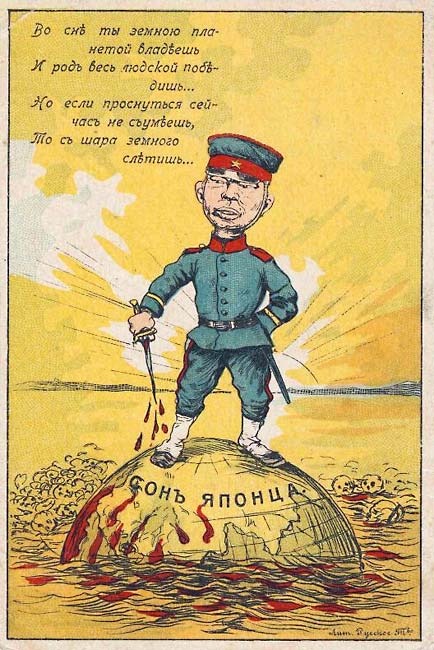
“Russian Sailor at Port Arthu”
[2002.3843]

“Uncle Sam Sitting on a Big Purse
Attacked by Tiny Japanese
Soldiers”
[2002.3769]
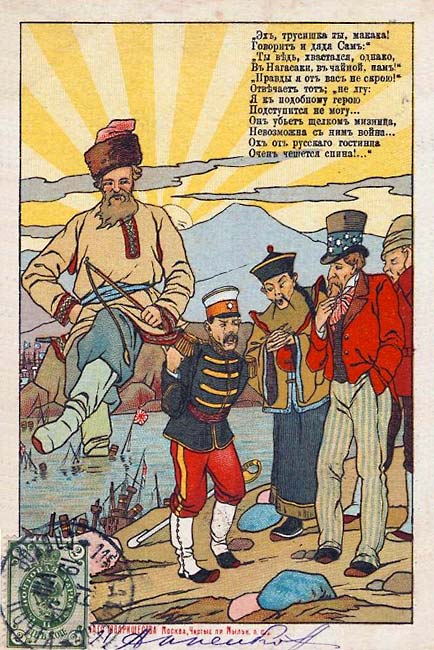
“Japanese Soldier Asking Help
from Uncle Sam”
[2002.3766]
Visualizing
Cultures is grateful to Alevtina Asarina
and
Elizabeth Wood for help with the Russian text.
Images from the Leonard A. Lauder Collection of
Japanese Postcards at the Museum of Fine Arts, Boston
“Yellow Promise/Yellow Peril” by John W. Dower
On viewing images of a potentially disturbing
nature: click here.
Massachusetts Institute of Technology
© 2008 Visualizing Cultures


